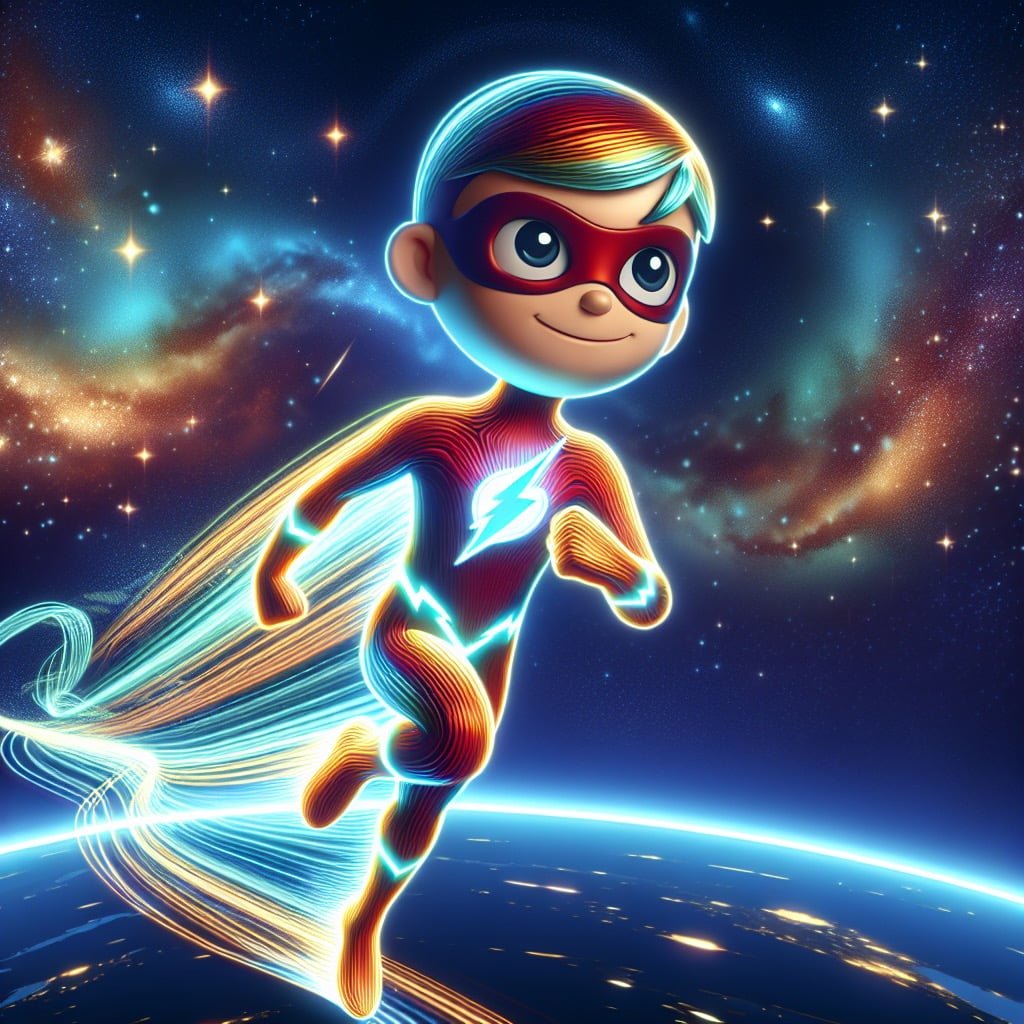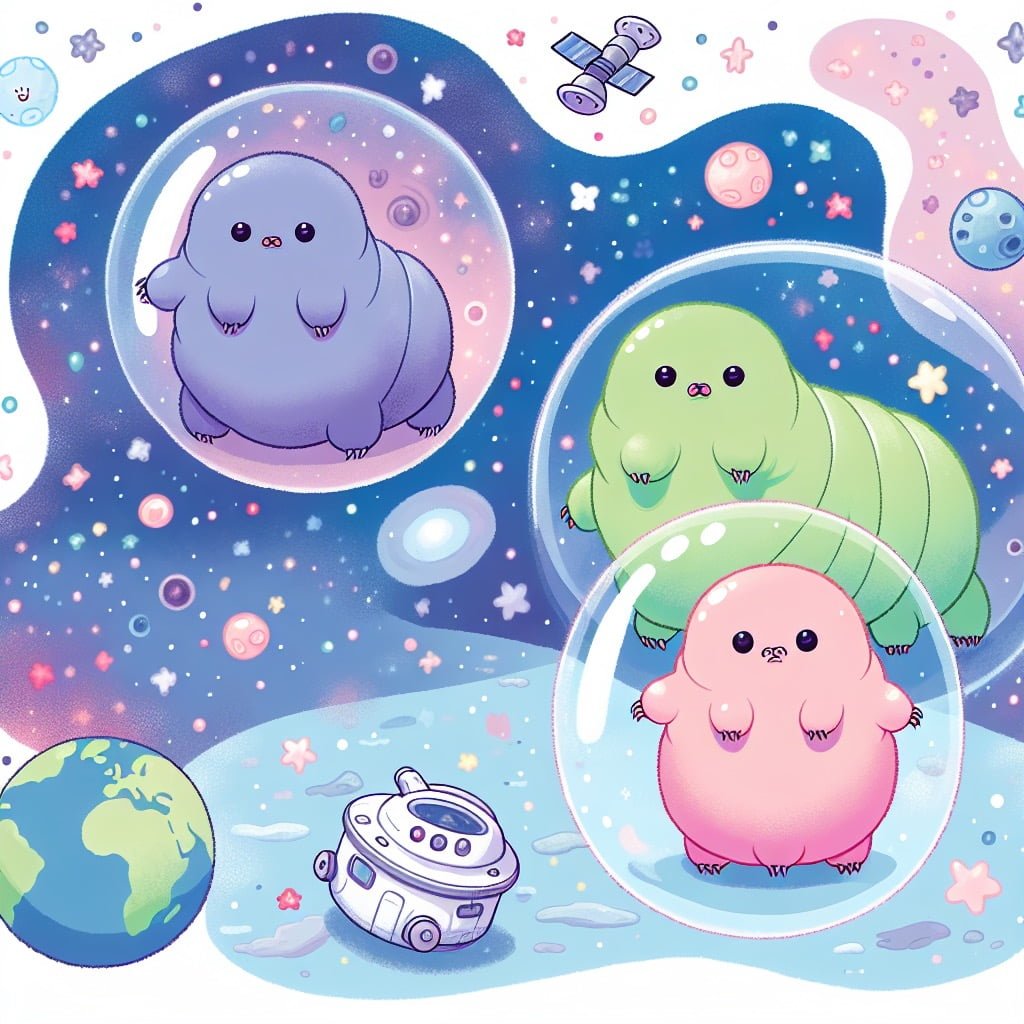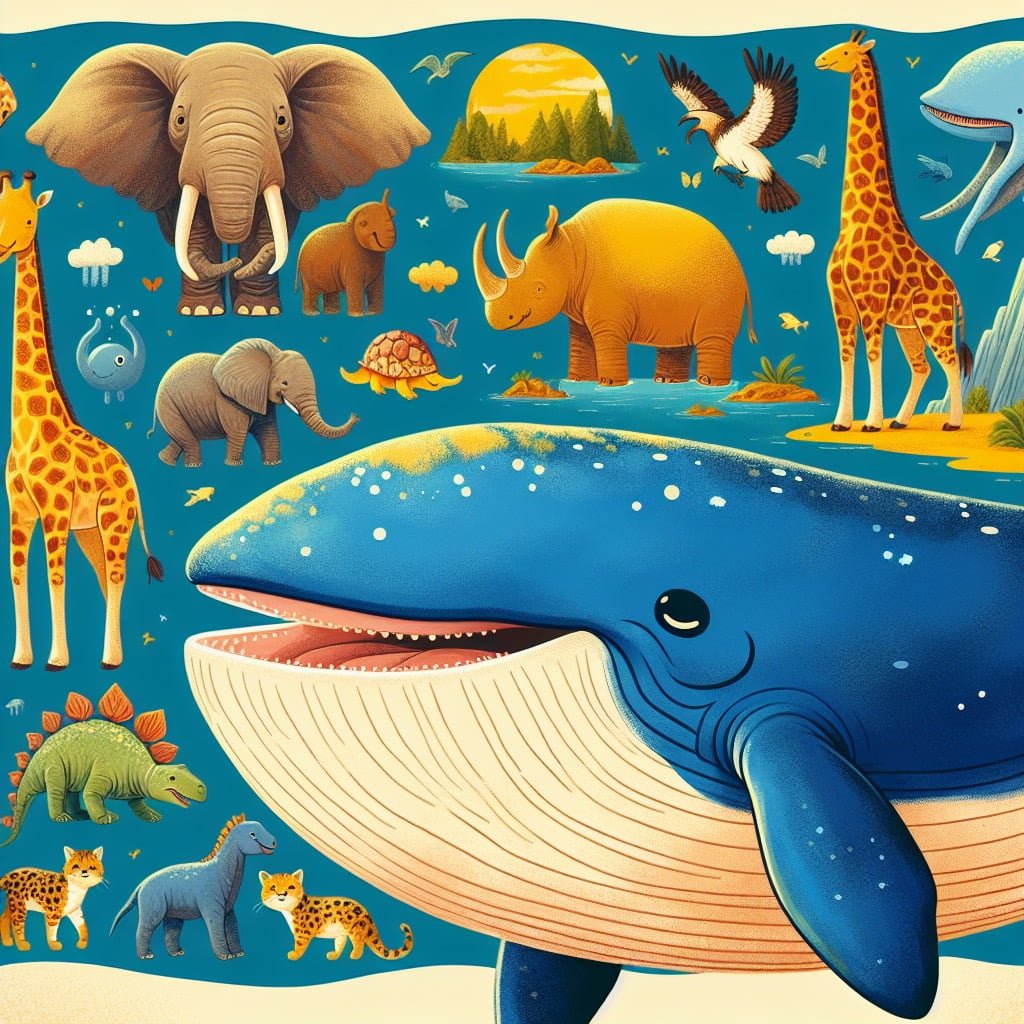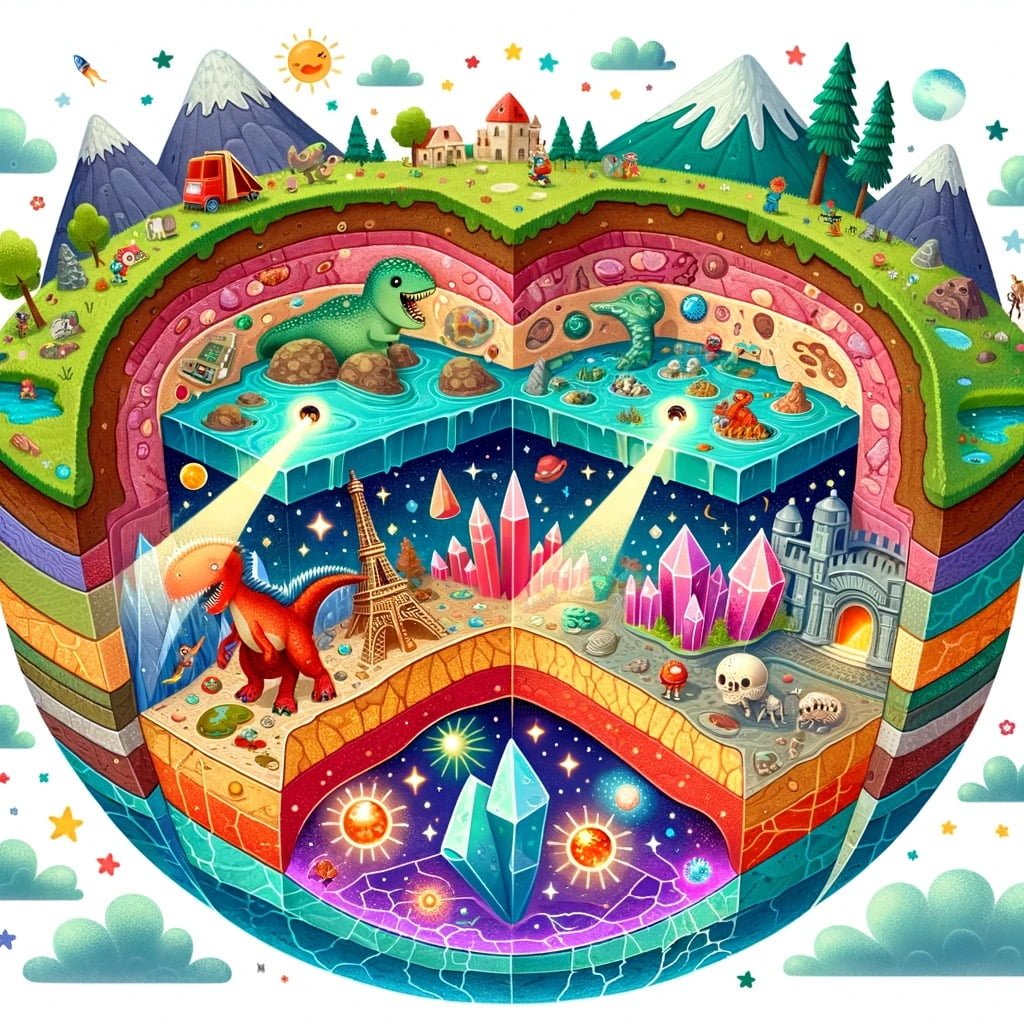Welcome to our blog post full of fascinating Fun Facts for Kids About the Natural World! If you’re looking to ignite a sense of wonder and curiosity in young minds, you’ve come to the right place. In this post, we delve into a variety of captivating facts about the amazing phenomena and creatures that make up our natural world. From the mind-boggling speed of light to the resilient tardigrade, the largest volcano on Mars, and the incredible abilities of bees and octopuses, there’s something here to spark curiosity in kids of all ages. Join us on a journey of discovery as we explore these fun facts and inspire a love for science and nature in the next generation of explorers and conservationists. So get ready to be amazed by the wonders of the natural world!
Fun Facts for Kids About the Natural World
1. The Speed of Light is 299,792,458 Meters per Second

For younger kids: Light travels super fast, like a super speedy superhero!
For older kids: Light is incredibly fast, traveling at a speed of 299,792,458 meters per second, making it the ultimate speed limit in the universe.
Detailed explanation:Fun Facts for Kids About the Natural World:
Did you know that the speed of light is an incredible 299,792,458 meters per second? This is the speed at which light travels through a vacuum, such as outer space. To put this into perspective, if you were able to travel at the speed of light, you could go around the Earth seven and a half times in just one second!
The speed of light is a fundamental constant in physics, and it plays a crucial role in our understanding of the universe. It is used in calculations for everything from determining the distance between stars to measuring the age of the universe.
One interesting thing to note is that the speed of light is the same for all observers, regardless of their own motion. This means that no matter how fast you are moving, you would always measure the speed of light to be the same. This principle, known as the constancy of the speed of light, is a key concept in Einstein’s theory of relativity.
In addition to its scientific significance, the speed of light also has practical applications in our everyday lives. For example, it is used in technologies such as fiber optics, which rely on the rapid transmission of light to carry information over long distances.
In conclusion, the speed of light at 299,792,458 meters per second is truly a remarkable and fascinating aspect of the natural world. Its implications reach far beyond our planet and have helped shape our understanding of the universe as a whole.
Fun Facts for Kids About the Natural World
2. The Tardigrade Can Survive Extreme Conditions

For younger kids: Tardigrades are microscopic animals that can survive in space!
For older kids: Tardigrades, also known as water bears, can withstand extreme conditions such as radiation, boiling temperatures, and the vacuum of space, making them one of the toughest creatures on Earth.
Detailed explanation:The Tardigrade, also known as the water bear, is an incredible microscopic creature that has fascinated scientists and nature enthusiasts alike for its ability to survive in extreme conditions. These fun facts for kids about the natural world showcase just how amazing this tiny organism really is.
One of the most impressive abilities of the Tardigrade is its ability to survive in environments that would be deadly to most other living organisms. From the freezing temperatures of Antarctica to the scorching heat of deserts, these hardy creatures can withstand it all. They can even survive being exposed to outer space, high levels of radiation, and extreme pressures, making them one of the most resilient animals on the planet.
The secret to the Tardigrade’s survival lies in its unique biology. They are able to enter a state known as cryptobiosis when faced with harsh conditions, shutting down their metabolism and essentially going into a state of suspended animation. In this state, they can survive for years without food or water, waiting until conditions improve before springing back to life.
Scientists are studying the Tardigrade’s amazing abilities in hopes of unlocking new technologies and methods for preserving biological material in extreme conditions. Their resilience and adaptability make them a valuable resource for understanding how life can thrive in even the harshest environments on Earth and beyond.
In conclusion, the Tardigrade’s ability to survive extreme conditions is truly a marvel of the natural world. These fun facts for kids about the natural world highlight just how incredible and fascinating these tiny creatures really are.
Fun Facts for Kids About the Natural World
3. A Single Bolt of Lightning Can Heat the Air Around it to 50,000 Degrees Fahrenheit

For younger kids: Lightning is super hot—it’s even hotter than the sun!
For older kids: One bolt of lightning can heat the air around it to an intense 50,000 degrees Fahrenheit, which is five times hotter than the surface of the sun.
Detailed explanation:Fun Facts for Kids About the Natural World are a great way to spark interest and curiosity in young minds about the wonders of science. One incredibly fascinating fact that we can share with kids is that a single bolt of lightning can heat the air around it to a scorching 50,000 degrees Fahrenheit.
When lightning strikes, it is a powerful discharge of electricity that occurs between a cloud and the ground, or between two different clouds. This discharge causes the surrounding air to heat up rapidly, reaching temperatures hotter than the surface of the sun. The extreme heat of lightning is what causes the air around it to expand rapidly, creating the booming sound we hear as thunder.
The reason that lightning is able to heat the air to such an incredible temperature lies in the physics of electricity and the properties of air. As the electrical current flows through the air, it encounters resistance, which causes the air to heat up. This rapid heating causes the air molecules to vibrate and collide with each other, generating even more heat in a chain reaction.
Learning about Fun Facts for Kids About the Natural World like this one can help children understand the amazing power of nature and the science behind it. By exploring these facts, kids can develop a greater appreciation for the world around them and inspire a love of learning about the wonders of the natural world.
Fun Facts for Kids About the Natural World
4. The Largest Volcano in the Solar System is on Mars

For younger kids: Mars has a very big volcano that’s out of this world!
For older kids: The largest volcano in the solar system, Olympus Mons, is located on Mars and measures a whopping 13.6 miles high—almost three times the height of Mount Everest.
Detailed explanation:One of the most fascinating Fun Facts for Kids About the Natural World is that the largest volcano in the solar system is not located on Earth, but on Mars. Olympus Mons, a shield volcano on the red planet, is the tallest volcano in the solar system, standing at a staggering height of 13.6 miles (22 kilometers) – nearly three times the height of Mount Everest, the tallest mountain on Earth.
Olympus Mons is a shield volcano, which means it has a broad, gently sloping shape compared to the steep, conical shape of many Earth volcanoes. This is due to the lower viscosity of the lava on Mars, allowing it to flow more easily and spread out over a larger area. The volcano is so massive that its base stretches over an area roughly the size of the state of Arizona.
The immense size of Olympus Mons is a testament to the geological activity that once occurred on Mars. While the volcano is currently dormant, its presence provides valuable insight into the planet’s volcanic history and the processes that shaped its surface. Studying Olympus Mons and other Martian volcanoes can help scientists better understand the geology and tectonics of Mars, as well as the potential for past or present habitability on the planet.
In conclusion, the discovery of Olympus Mons as the largest volcano in the solar system is a fascinating Fun Fact for Kids About the Natural World that showcases the diverse and awe-inspiring geology of our neighboring planet, Mars.
Fun Facts for Kids About the Natural World
5. The Blue Whale is the Largest Animal on Earth

For younger kids: Blue whales are super huge—they’re even bigger than dinosaurs!
For older kids: The blue whale holds the title for the largest animal on Earth, with some individuals reaching a staggering length of about 100 feet and weighing as much as 200 tons.
Detailed explanation:The Blue Whale holds the title for being the largest animal on Earth, making it a fascinating subject for Fun Facts for Kids About the Natural World. These magnificent creatures can grow up to a whopping 100 feet in length and weigh as much as 200 tons. To put this into perspective, that is about the length of three school buses lined up end to end and the weight of 33 elephants combined!
One of the key reasons for the Blue Whale’s massive size is its diet. These gentle giants feed primarily on tiny shrimp-like creatures called krill, consuming up to 4 tons of them each day. This high volume of food intake allows the Blue Whale to sustain its enormous body size.
Another interesting fact about the Blue Whale is its incredible heart. Weighing in at around 400 pounds, the Blue Whale’s heart is the largest of any animal on the planet. In fact, a small child could crawl through the arteries of a Blue Whale’s heart – that’s how big it is!
Despite their enormous size, Blue Whales are known for their graceful swimming abilities. They can reach speeds of up to 30 miles per hour when they need to, although they typically cruise at a more leisurely pace of 5-10 miles per hour. Their distinctive blue-gray coloration and mottled skin make them easily recognizable as they glide gracefully through the ocean.
In conclusion, the Blue Whale’s massive size, impressive feeding habits, and unique characteristics make it a truly remarkable creature to learn about in Fun Facts for Kids About the Natural World.
Fun Facts for Kids About the Natural World
6. Octopuses Have Three Hearts

For younger kids: An octopus is like a superhero with three hearts!
For older kids: Surprisingly, octopuses have three hearts—an impressive cardiovascular system that helps pump blood to their organs and gills.
Detailed explanation:Octopuses are fascinating creatures with many unique characteristics that set them apart from other animals in the natural world. One of the most interesting facts about octopuses is that they have three hearts. These hearts serve different functions within the octopus’s body, allowing it to efficiently circulate oxygen-rich blood throughout its complex anatomy.
Two of the hearts are known as branchial hearts, and their main function is to pump blood through the gills of the octopus, where oxygen is absorbed from the water. The third heart is called the systemic heart, and it is responsible for pumping oxygenated blood to the rest of the octopus’s body. This three-heart system is highly efficient and helps to ensure that the octopus’s tissues receive an ample oxygen supply, even in challenging underwater environments.
The presence of three hearts in octopuses is just one example of the incredible adaptations that these creatures have evolved over millions of years of natural selection. It allows them to thrive in diverse ecosystems and survive in conditions that would be challenging for other animals. By understanding these unique features of octopuses, we can gain a greater appreciation for the complexity and wonder of the natural world around us.
In conclusion, the fact that octopuses have three hearts is just one of the many fascinating aspects of their biology. These creatures are truly remarkable in their ability to adapt and survive in their marine habitats. Learning about these Fun Facts for Kids About the Natural World can inspire a sense of awe and curiosity about the diversity of life on Earth.
Fun Facts for Kids About the Natural World
7. The Earth’s Atmosphere Extends Beyond the Moon

For younger kids: Earth’s atmosphere reaches really, really far into space!
For older kids: The Earth’s atmosphere actually extends far beyond the moon, creating a region known as the geocorona, where the outer fringes of our atmosphere stretch out over 390,000 miles.
Detailed explanation:One of the most fascinating Fun Facts for Kids About the Natural World is that the Earth’s atmosphere actually extends beyond the Moon. This may seem hard to believe, considering the Moon is approximately 238,855 miles away from Earth, but it is true. The Earth’s atmosphere doesn’t just abruptly stop at a certain point; instead, it gradually thins out as you move further away from the planet. This thin layer of gases surrounding our planet is what we refer to as the atmosphere.
The Earth’s atmosphere is composed of different layers, each with its own unique characteristics. The troposphere is the closest layer to the Earth’s surface and is where all of our weather phenomena occur. As you move up through the atmosphere, you encounter the stratosphere, mesosphere, thermosphere, and exosphere. The exosphere is the outermost layer and is where the atmosphere gradually transitions into outer space.
It is in this exosphere that the Earth’s atmosphere reaches out beyond the Moon. This is because the exosphere extends to about 6,200 miles above the Earth’s surface, which is about 1/10th of the distance to the Moon. While the density of gases in this region is extremely low, there are still traces of hydrogen, helium, oxygen, and other molecules present.
So, the next time you look up at the Moon, remember that the Earth’s atmosphere stretches far beyond it, connecting our planet to the celestial bodies that surround us in the vastness of space.
Fun Facts for Kids About the Natural World
8. Bees Can Recognize Human Faces

For younger kids: Bees are super smart and can remember people’s faces!
For older kids: Bees have an incredible ability to recognize and remember human faces, demonstrating their sophisticated cognitive skills beyond their important role as pollinators.
Detailed explanation:Bees are fascinating creatures with many remarkable abilities, one of which is their ability to recognize human faces. This fact may come as a surprise to many, but studies have shown that bees are able to distinguish between different human faces and remember them for a period of time.
This incredible skill is believed to be a result of the highly developed visual system that bees possess. Bees have large, complex eyes that are capable of detecting patterns and shapes with great detail. They are also able to process and store this visual information in their brains, allowing them to recognize and remember specific faces.
One study conducted by researchers at the University of Queensland in Australia found that bees were able to associate a particular face with a sugary reward. The bees were shown various images of human faces, some of which were associated with a sugary treat. The bees quickly learned to associate the rewarded faces with the sweet reward, demonstrating their ability to not only recognize human faces, but also to make associations based on this recognition.
This ability of bees to recognize human faces is just one example of the incredible and often surprising capabilities of the natural world. Fun Facts for Kids About the Natural World can help to inspire curiosity and wonder in young minds, encouraging them to learn more about the amazing creatures and phenomena that exist in the world around them. Bees recognizing human faces serves as a reminder of the complexity and beauty of nature, and the endless opportunities for discovery and fascination that it holds.
Fun Facts for Kids About the Natural World
9. The Moon is Moving Away from the Earth

For younger kids: The moon is getting farther and farther away from us every year!
For older kids: Scientists have discovered that the moon is gradually moving away from the Earth at a rate of about 1.5 inches per year, due to the tidal forces between both celestial bodies.
Detailed explanation:One fascinating aspect of the natural world that many people may not be aware of is the fact that the Moon is actually moving away from the Earth. This might seem surprising, as we often think of the Moon as a constant presence in our night sky. However, due to the gravitational interactions between the Earth and the Moon, the Moon is slowly drifting farther away from us over time.
This phenomenon is known as lunar recession, and it is caused by the gravitational forces between the Earth and the Moon. Essentially, the gravitational pull of the Moon creates a bulge in the Earth’s oceans, causing tides. As a result, there is a transfer of momentum between the Earth and the Moon, causing the Moon to move slightly farther away from the Earth each year.
The rate at which the Moon is moving away from the Earth is approximately 1.5 inches per year. While this might seem like a very small distance, over millions of years, it adds up to a significant change in the Moon’s distance from our planet.
This fact about the Moon moving away from the Earth is just one example of the many wonders of the natural world that can captivate and inspire us. Fun Facts for Kids About the Natural World like this can help spark curiosity and a sense of wonder about the world around us. So next time you look up at the night sky and see the Moon, take a moment to appreciate the complex dynamics at play that are causing it to slowly drift away from us.
Fun Facts for Kids About the Natural World
10. The First Computer Programmer was a Woman

For younger kids: The first computer programmer was a girl!
For older kids: Ada Lovelace, an English mathematician, is considered the world’s first computer programmer for her work on Charles Babbage’s early mechanical general-purpose computer, the Analytical Engine.
Detailed explanation:Fun Facts for Kids About the Natural World: The first computer programmer was a woman named Ada Lovelace. Born in 1815, Ada Lovelace was a mathematician and writer who is considered to be the first person to write a computer program. She worked closely with Charles Babbage, an inventor and mathematician who is often referred to as the “father of the computer.”
Ada Lovelace’s work with Charles Babbage’s Analytical Engine, a mechanical computing device, led her to write a set of instructions that could be used to calculate a series of numbers known as Bernoulli numbers. This set of instructions is considered to be the first computer program ever written.
Ada Lovelace’s contributions to the field of computer science were groundbreaking and ahead of her time. She recognized the potential for computers to do more than just basic calculations, envisioning a future where computers could be used for tasks such as composing music and creating visual art.
Despite facing societal barriers as a woman in a male-dominated field, Ada Lovelace’s work laid the foundation for modern computer programming. Her legacy continues to inspire women and girls in STEM fields today.
In conclusion, Ada Lovelace’s pioneering work as the first computer programmer demonstrates the important role that women have played in the development of technology. Her story serves as a reminder that anyone, regardless of their gender, can make significant contributions to the field of computer science. Fun Facts for Kids About the Natural World like the story of Ada Lovelace can inspire future generations to pursue their interests in STEM fields and continue to push the boundaries of what is possible in the world of technology.
Did You Know?
Scientists believe that a day on Venus is longer than a year on Venus due to its extremely slow rotation and relatively short orbit around the sun!
.
As an expert in the field of popular science and a skilled writer of compelling blogs, I am here to tell you why it is worth reading more about fun facts for kids about the natural world.
The natural world is a truly fascinating and endlessly intriguing place, filled with wonders and mysteries waiting to be discovered. By delving into fun facts about nature, kids can not only expand their knowledge and appreciation for the world around them, but also spark curiosity and wonder.
Learning about the diverse species of plants and animals, the unique adaptations they have developed, and the incredible ways they interact with their environment can truly inspire awe and respect for the beauty and complexity of nature. This deeper understanding of the delicate balance and interconnectedness of ecosystems can foster a sense of responsibility and stewardship towards our planet.
Additionally, exploring fun facts about the natural world can provide a plethora of educational benefits for kids. From improving vocabulary and reading comprehension skills to fostering critical thinking and analytical abilities, engaging with scientific concepts in a fun and engaging way can spark a lifelong love for learning and exploration.
By reading more about fun facts for kids about the natural world, children can cultivate a sense of wonder, curiosity, and appreciation for the incredible diversity and beauty of our planet. Let’s continue to inspire the next generation of explorers and conservationists by encouraging them to delve into the fascinating world of nature!
Sources and additional information for Fun Facts for Kids About the Natural World
WikipediaBritannicaScienceDirectNatureScientific AmericanNew ScientistNational Science FoundationScience NewsThe Royal SocietyLive ScienceScience MagazinePLOS ONENational Geographic KidsNASALive ScienceScientific AmericanNational Science Foundation (NSF)The Royal SocietyAmerican Association for the Advancement of Science (AAAS)Khan AcademyExploratorium




